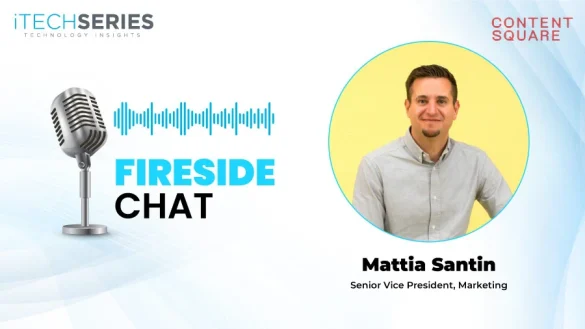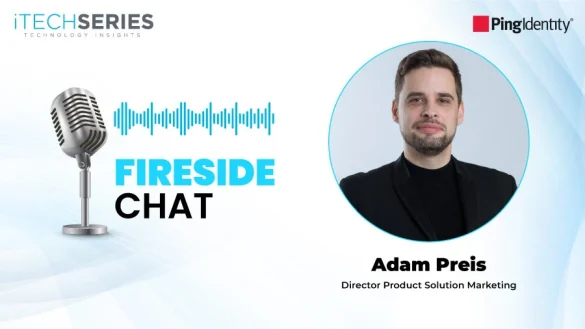The Evolving Role of Events in Marketing
Events have long been a cornerstone of marketing strategies, serving as platforms for brand dissemination and audience engagement. However, the landscape is changing. The rise of digital technologies and shifting consumer behaviors demand a more integrated, three-phased approach that combines events with creativity acting as a catalyst and marketing, a bridge. We will also address the common challenges and cover the best practices for successful integration.
Creativity: The Catalyst
Creativity is not just an added bonus; it’s essential. Stimulate these 5 effective principles to enrich the audience’s experience and amplify brand messaging.
Theme Integration: A well-aligned theme creates a cohesive experience that resonates with attendees. Consistent design, communication, and visuals should align with the overarching theme to deliver a powerful message. Weaving thematic elements throughout all event components—marketing materials, the event itself—creates an immersive experience that reinforces the brand narrative. Repetition across multiple touchpoints strengthens message absorption, making it more likely for attendees to internalize and connect with the brand.
Experiential Marketing: Consumers crave experiences. A survey by Event Marketer found that 70% of attendees prefer hands-on experiences over passive observation. Events allow brands to communicate their values and narratives tangibly. By integrating events into their marketing campaigns, brands can strategically position themselves to tell their story and forge emotional bonds with participants.
Tech Integration: Utilizing technology elevates events in innovative ways. Incorporating tools like live polling, interactive apps, and augmented reality can engage participants, making them active contributors rather than passive observers. This fosters deeper connections and encourages meaningful interactions with the brand. A report by Statista projects the global VR and AR market will reach $300 billion by 2024, highlighting its relevance in supporting go-to-market initiatives.
Visual Storytelling: According to a study by Headstream, 55% of people are more likely to remember a story than a statistic. The power of visuals cannot be overstated. Events that integrate compelling design elements—such as videos, graphics, and immersive environments—effectively communicate a brand story. A meticulously curated atmosphere enhances the narrative, transforming events into memorable experiences closely associated with the brand.
Engaging Content: Creativity also extends to the content delivered during events. A study by EventMB shows that 82% of attendees find connections made during events valuable. Featuring thought-provoking speakers or interactive sessions allows for tailoring content to align with attendees’ interests, ensuring maximum engagement and reinforcing the overall message.
Marketing: The Bridge
When events and marketing strategies operate in tandem, organizations can unlock a wealth of advantages to achieve broader business goals. The synergy of these 4 initiatives will help navigate today’s competitive landscape.
Alignment with GTM & Sales: Successful events align with wider go-to-market strategies and sales initiatives, including Account-Based Marketing (ABM), B2B, and B2C initiatives. Companies with aligned marketing and sales teams achieve 38% higher win rates, according to the Content Marketing Institute. Events serve as key touchpoints for brand exposure, lead generation, and sales enablement. By targeting specific audiences, whether through B2B events or direct-to-consumer experiences, organizations can effectively achieve broader marketing goals.
Brand Consistency: Unified brand messaging is essential, and integrating marketing with events ensures consistency across all touchpoints. A Lucidpress survey shows that consistent branding can boost revenue by up to 23%. When all event elements—from visuals to content—align with brand messaging, attendees are more likely to remember the brand post-event, building trust and credibility.
Data-Driven Insights: Collecting feedback through surveys and analyzing attendee interactions provides invaluable insights into audience preferences and behaviors. According to Eventbrite, 77% of event organizers believe that data is crucial for improving future events. By leveraging this data, organizations can refine their messaging and enhance the overall attendee experience, better meeting audience expectations.
Nurturing Relationships: Events create unique opportunities for direct interactions with existing clients and prospects. A study by the Event Marketing Institute found that 87% of attendees’ value in-person interactions for building relationships. This direct engagement fosters customer loyalty and long-term partnerships. Integrating follow-ups and personalized engagement strategies can convert casual attendees into engaged advocates, strengthening the customer base.
Addressing Challenges in Integration
While the benefits of integrating events, marketing, and creativity are compelling, organizations often face these 3 challenges:
- Resource Allocation: Balancing the budget for both marketing and events is crucial. Effective resource management includes financial, staffing, and time evaluation.
- Skilled Team: A team with diverse expertise—marketing strategists, event planners, creative thinkers—is vital for successful execution. Collaboration fosters innovative solutions and ensures seamless communication.
- Measurement Metrics: Establishing clear goals for measuring impact is essential. Robust tracking mechanisms and analytics tools enable insightful evaluation of audience behavior and event performance.
Best Practices for Successful Integration
To effectively merge events with marketing and creativity, organizations can adopt the following best practices:
- Strategic Planning: Align events with broader marketing goals to establish a solid foundation for success.
- Incorporate Feedback: Use surveys and focus groups to inform future strategies and enhance attendee experiences.
- Leverage Technology: Adopt tools that elevate engagement and broaden outreach for hybrid events and promotion.
- Engage with Storytelling: Create relatable narratives throughout event programming to enhance engagement.
- Continuous Learning: Review processes and outcomes for iterative improvement, ensuring agility.
- Cross-functional collaboration: Encourage collaboration among departments to create a unified experience.
Conclusion
In an age where relationships and experiences matter most, the integration of events, marketing, and creativity is essential for brands to achieve their goals. Embracing this synergy enhances brand recognition and nurtures meaningful connections, ultimately driving success. By focusing on storytelling, interactivity, and leveraging technology, organizations can create impactful experiences and cultivate lasting brand loyalty. Those mastering this integration will lead the way in shaping the future of their industries. Feel free to reach out via LinkedIn —I’m here to help!








